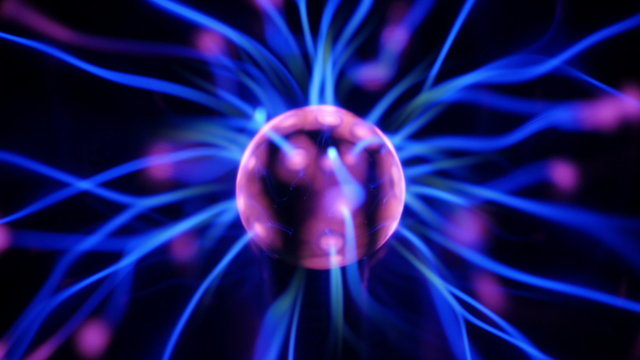In the realm of particle physics, the first concept that often garners attention is that of protons. These fundamental constituents of atomic nuclei encapsulate a wealth of information about the nature of matter itself. Yet, how much do we truly know about protons beyond their existence? What mysteries do they hold, and how might they influence the universe in ways we have yet to comprehend? As we embark on this intellectual journey, let us consider: what challenges arise when attempting to elucidate the true significance of protons?
To begin, it is pivotal to understand the intrinsic properties of protons. Protons are baryonic particles, residing within the nucleus of atoms alongside neutrons. They possess a positive electric charge, quantified as +1, which is fundamental to their role in electromagnetic interactions. The mass of a proton is approximately 1.67 x 10-27 kg, making it roughly 1836 times heavier than an electron. This noteworthy heft contributes to the stability of atomic structures, asserting the pivotal role of protons in the formation of elements.
At a more detailed level, protons are not elementary particles; rather, they are composed of quarks held together by the strong nuclear force, mediated by gluons. Specifically, protons consist of two up quarks and one down quark, which generate their positive charge and mass. This quark-gluon interaction is a fascinating aspect of quantum chromodynamics (QCD), the theory that describes the strong force. Nonetheless, the challenge persists: what implications does this substructure hold for our understanding of nuclear physics and the formation of matter?
Furthermore, protons play a critical role in the very fabric of the universe through their influence on chemical properties. The number of protons in an atom, dictated by its atomic number, determines the identity of the element. Take hydrogen, with one proton, and compare it to carbon, which possesses six protons. The vast diversity of elements, and thus the complexity of the universe, hinges on the arrangement and number of protons in atomic nuclei. This leads us to ponder: how does the interplay of protons contribute to the intricacies of molecular chemistry and life as we know it?
Interestingly, protons also exhibit perplexing behavior in various environments. For instance, in high-energy physics experiments, such as those conducted at particle accelerators, protons can be collided at near-light speeds, creating a plethora of particles and revealing insights into fundamental forces. This phenomenon opens the door to exploring whether protons may hold secrets related to dark matter and energy, two of the most enigmatic components of the cosmos. As scientists grapple with these challenges, the quest to uncover the deeper truths of protons drives them into uncharted territories.
Additionally, one must not overlook the role of protons in contemporary technology. Proton-based applications extend far beyond conventional chemistry. For example, proton therapy is an innovative cancer treatment that targets tumors with precision, minimizing damage to surrounding healthy tissue. This underscores the biophysics of protons, merging the fields of medical science and particle physics. Yet, the challenge remains: as we harness the potential of protons, how can we balance the benefits against the ethical considerations of advanced technologies?
Moreover, the influence of protons resonates through the cosmos. Stellar nucleosynthesis, the mechanism by which stars produce energy and synthesize new elements, primarily relies on proton-proton chains and carbon-nitrogen-oxygen cycles. In these processes, hydrogen nuclei (protons) fuse under immense pressure and temperature, forming helium and releasing vast amounts of energy in the form of light and heat. This raises a provocative question: how does the lifecycle of protons within stars contribute to the very existence of life on Earth?
Transcending our solar system, protons are prevalent in cosmic rays—high-energy particles that traverse space at nearly the speed of light. Upon entering the Earth’s atmosphere, these protons collide with atmospheric particles, engendering secondary particles that initiate complex atmospheric interactions. Here lies another conundrum: what are the implications of cosmic proton interactions on biological systems and the fundamental laws of physics? The study of these high-energy particles challenges existing paradigms in astrophysics and necessitates further inquiry.
As we endeavor to decipher the mysteries surrounding protons, numerous avenues for exploration emerge. The interplay of protons in fundamental physics, chemistry, and cosmology positions them at the cornerstone of scientific inquiry. Yet, the questions persist: In what ways do protons shape our understanding of the universe? Can they unveil secrets that challenge our current scientific frameworks? What ethical considerations arise as we manipulate the very building blocks of matter for technological advancements?
In conclusion, protons are far more than mere constituents of atoms; they are pivotal players in an elaborate cosmic ballet that we continue to unravel. The challenges posed by their nature, behavior, and implications serve as a springboard for further exploration. As we probe deeper into the enigmatic world of protons, we are reminded that the complexities of the universe often hide behind the simplicity of fundamental particles. The journey to understanding protons and their myriad influences is not only a scientific challenge but also a philosophical inquiry into the essence of existence itself.












